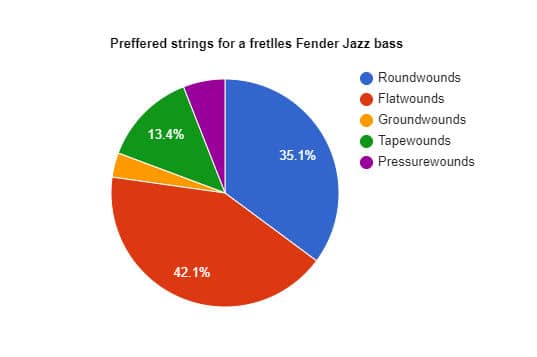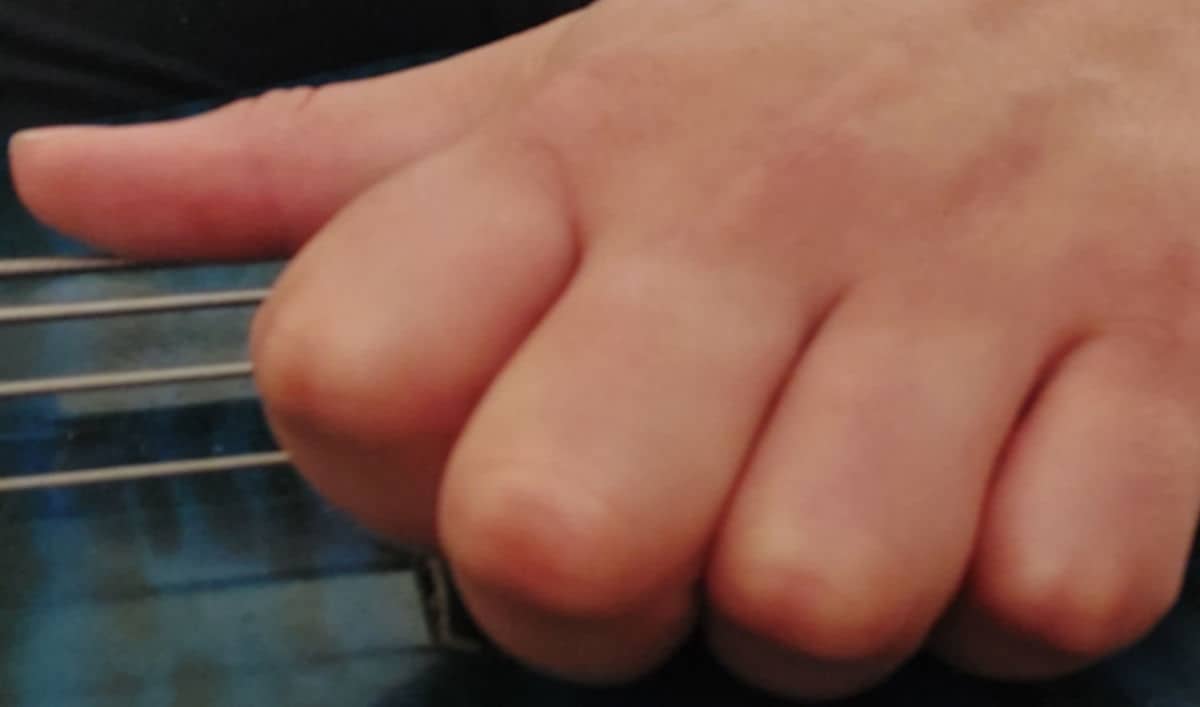The fretless bass makes gives a lot more freedom in how you move across the fingerboard than its fretted counterpart. It also has a smooth toner. However, a great slap tone is rarely associated with smoothness. Thus it needs to be asked, can you slap a fretless bass?
A fretless bass can be slapped just like a bass with frets. However, the lack of frets produces a warmer sound that is atypical for slapping. With the right technique, a slap plate, and EQ, a fretless bass can produce a great slap sound, but it will still sound dissimilar to a bass with frets.
The question is thus not so much “can you”, but rather, should you slap a fretless bass?
While it is uncommon to do so, some bassists have chosen to do so with great results. I`m gonna show you a couple of examples of this below.
There are also some important things to be mindful of if you intend to slap a fretless bass. Wear, tone, technique, and string choice are some of the most note notable ones. After reading this article you will know how to deal with all of them and have a clear idea of how you should go about slapping a fretless bass.
Does slapping a fretless bass damage it?
Slapping a fretless bass can potentially damage the fretboard and wear out the coating on it. This can be prevented by not playing too hard, using flat-wound strings, applying an epoxy coating, and installing a slap bar. With an appropriate setup, slapping a fretless bass will rarely cause noteworthy damage to it.
Depending on your playstyle and bass, you could potentially slap your fretless without seeing any more wear on it than when playing with a pick or fingerstyle. However, if you intend to slap your fretless for years to come, taking precautionary steps is a good idea to lower the risk of damaging your instrument.
Related reading: Playing a fretless bass as a beginner
- Playstyle – How hard you are slapping and popping the strings on your bass greatly impacts its tone. Playing harder also wears down your instrument faster. While it`s not wrong to play with more intensity, playing softer will tear into the bottom of the fingerboard a lot slower. Developing great control over your slapping is a time-consuming and difficult skill. Thus, if you intend to slap a fretless bass it’s a good idea to invest in bass lessons or an online course. This way you won`t have to fix your technique later on, and you will be preserving your instrument.
- String choice – What type of bass strings you use has a big impact on how much damage your fretless bass will take from slapping. While round-wounds will give you a great sound similar to that of Jaco Pastorius, they will also war your fretboard out faster. Flatwounds will give you a different sound, but they will be less damaging to your instrument. More on string choice below.
- Slap plate – A slap plate, also known as a slap bar, is a metal plate that is installed at the top of your fretboard. The plate is placed close to where your highest fret would have been located. The traditional slap sound mainly comes from strings hitting the frets. Thus, the slap plate’s main purpose is to make the tone of your fretless similar to that of a fretted bass when slapped. It also serves as a way to protect the bottom of your fretboard from being damaged over time.
- Epoxy coating – Expoxy coating will make your fretboard more durable. This is especially helpful if you use roundwound strings. You can apply this coating on your fretboard yourself, and smooth it out by using sandpaper. Alternatively, you can get help at a repair shop. Bear in mind that the coating will alter the sound of your bass, and you can expect a somewhat brighter tone. Epoxy coating is especially helpful for softer wood types, such as rosewood.
Bassists that slap on a fretless
While slapping on a fretless bass is uncommon, there are multiple successful bassists who have done it.
Les Claypool of Primus is an incredibly creative bassist that often explores less common techniques and tones. On “Tommy the Cat” he uses a fretless 6-string bass to slap and slide in order to create unique lines with a distinct tone. Listen to the song below to get an idea of what this can sound like.
Related reading: Is a 6-string bass worth it?
For a virtuosos example of how the fretless bass can be slapped, listen to Micheal Manring.
He has been involved in a lot of genres such as Jazz fusion and world music but has also released some amazing solo bass tracks. “Helios” in particular, is a solo bass song where he plays an incredibly complex bass solo. It incorporates a lot of slapping and strumming on a fretless bass.
Bakithi Kumalo has played a fretless on various projects across genres and occasionally incorporates slapping. His most famous basswork might be on Paul Simon`s 1986 Graceland. Listen to “You Can Call me Al” not only for a fretless being slapped but also for a catchy and iconic bass line.
Furthermore, on his solo album from 1998, “San Bonan” Kumalo incorporates slapping on several of his bass lines. The album blends world music, folk, and jazz in a seamless fashion. It is thus a great example of how slapping can be incorporated into various musical contexts. Take a listen to the track “Zululand” in particular for a great example of this.
String choice for slapping a fretless
Roundwound strings wear down fretless basses faster. However, many bassists still elect to use them due to their balanced and brighter tone. This generally results in the bass needing maintenance every few years due to wear.
Flatwounds have a smoother sound with less high-end. They also wear out the fretboard slower than roundwounds. However, the traditional percussive sound of slap bass requires a lot of high end. This means that while flatwound strings can be slapped, they will produce a tone that is lacking in brightness.
When polled about what strings they preferred on a fretless Fender jazz bass, the members of the Talkbass forums were torn. 85 members preferred flatwounds, while 71 preferred roundwounds.

Thus, what type of strings you chose mainly comes down to what type of sound you are after. It also depends on how much you care about the wear that roundwounds will cause to your bass over time.
Conclusion
It is perfectly possible to slap a fretless bass. Multiple legendary bassists have done so and seen mainstream success.
How much damage slapping will do to your fretboard depends on your technique, strings, and whether you have a slap plate. Some bassists prefer getting a great tone, and accept that maintenance is a part of being a bassist. Depending on your bass and playstyle, playing with roundwound strings will require the fretboard to be fixed about every two years.
More than anything, slapping a fretless bass is all about what type of tone you are after. It is possible to get a distinct slap tone or mimic that of fretted bass to some extent. However, If you are looking for a typical slap sound, it will be easier to achieve this on a bass with frets.
Playing slap on a fretless bass is thus a great choice for anyone who is looking for a unique sound, or is looking to emulate the sound of the bassists showcased above. It is an unfit choice for anyone looking for a traditional, percussive slap sound.
While on the subject of frets, check out my article on whether you need 24 frets on a bass. It clears up some common misconceptions about fret count and helps in choosing a fretted bass that suits your playstyle.

